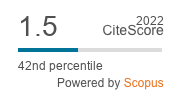Tendinopathies, chronic tendon disorders characterized by pain and functional impairment, are a common problem particularly in elite and recreational athletes. There is a high prevalence of Achilles tendinopathy in runners, while patellar tendinopathies, also referred to as jumpers knee, are very common amongst volleyball and basketball players. However, tendinopathies also occur in the sedentary population. The syndrome is associated with a variety of morphological, histopathological, biochemical and molecular changes, such as an increase in tendon cross sectional area, loss of fibre organization and infiltration of blood vessels. It has been shown that exercise or mechanical loading plays a role, which is why overuse is suspected to initiate tendinopathies. The exact mechanisms are still poorly understood, which makes the treatment problematic. A variety of treatment options are available, ranging from non-invasive procedures such as exercise treatment, topical nitroglycerin patches or shock wave therapy, over injections of various substances, such as corticosteroids, platelet-rich plasma or sclerosing agents, to surgical debridement. However, most of the treatment options focus solely on symptom relief, and the evidence for their effectiveness is often poor. The effectiveness of a treatment is furthermore likely to depend on the stage of the tendinapathy. In contrast to many therapies, exercise treatment has been relatively well investigated, has been shown to work in the majority of cases and is considered the gold standard.
Research-Article
Rehabilitation of tendopathies in human athletes
K. Legerlotz Related information
1 School of Biological Sciences, University of East Anglia, Norwich NR4 7TJ, United Kingdom
Comparative Exercise Physiology: 9
(3-4)- Pages: 153 - 160
Published Online: December 17, 2013
Abstract
Keywords: tendinopathy, exercise, eccentric training, treatment options
2023 Journal Impact Factor
0.9
source: Journal Impact Factor 2023™ from Clarivate™

Institutional Offers
For institutional orders, please contact [email protected].
Purchase Options
-
-
-
A. Byström, H.M. Clayton, E. Hernlund, M. Rhodin and A. Egenvall
-
L. Wright, E. Hernlund, C.T. Fjordbakk, B. Ytrehus, E. Law, M. Uhlhorn and M. Rhodin
-
Jane Williams and David Marlin
-
P.S. Rejeki, A. Pranoto, R.E. Prasetya and S. Sugiharto
-
A. Byström, H.M. Clayton, E. Hernlund, M. Rhodin and A. Egenvall
-
A. Andarianto, P.S. Rejeki, , A. Pranoto, T.W. Aga Seputra, and M. Miftahussurur
-
E.J. Hall and A.J. Carter
-
L. St. George, S.H. Roy, J. Richards, J. Sinclair and S.J. Hobbs



